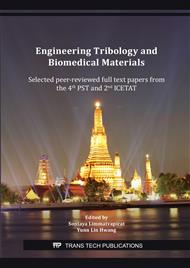p.164
p.170
p.176
p.182
p.187
p.193
p.199
p.208
p.219
Effects of the Rolling Directions on Wear of the Aluminum Alloys
Abstract:
Due to the booming development of the automation industry and the transportation industry, the mechanical components are prone to wear under long-term operating conditions. To improve the wear resistance, effects of the rolling directions on wear of the aluminum alloys are studied. An optical microscope is used to analyze the crystal phase, and the correlation between the crystal grains and the rolling direction is studied. This study can therefore establish a key technology for improving the wear resistance of aluminum alloys.
Info:
Periodical:
Pages:
193-198
Citation:
Online since:
October 2021
Authors:
Keywords:
Price:
Сopyright:
© 2021 Trans Tech Publications Ltd. All Rights Reserved
Share:
Citation:


